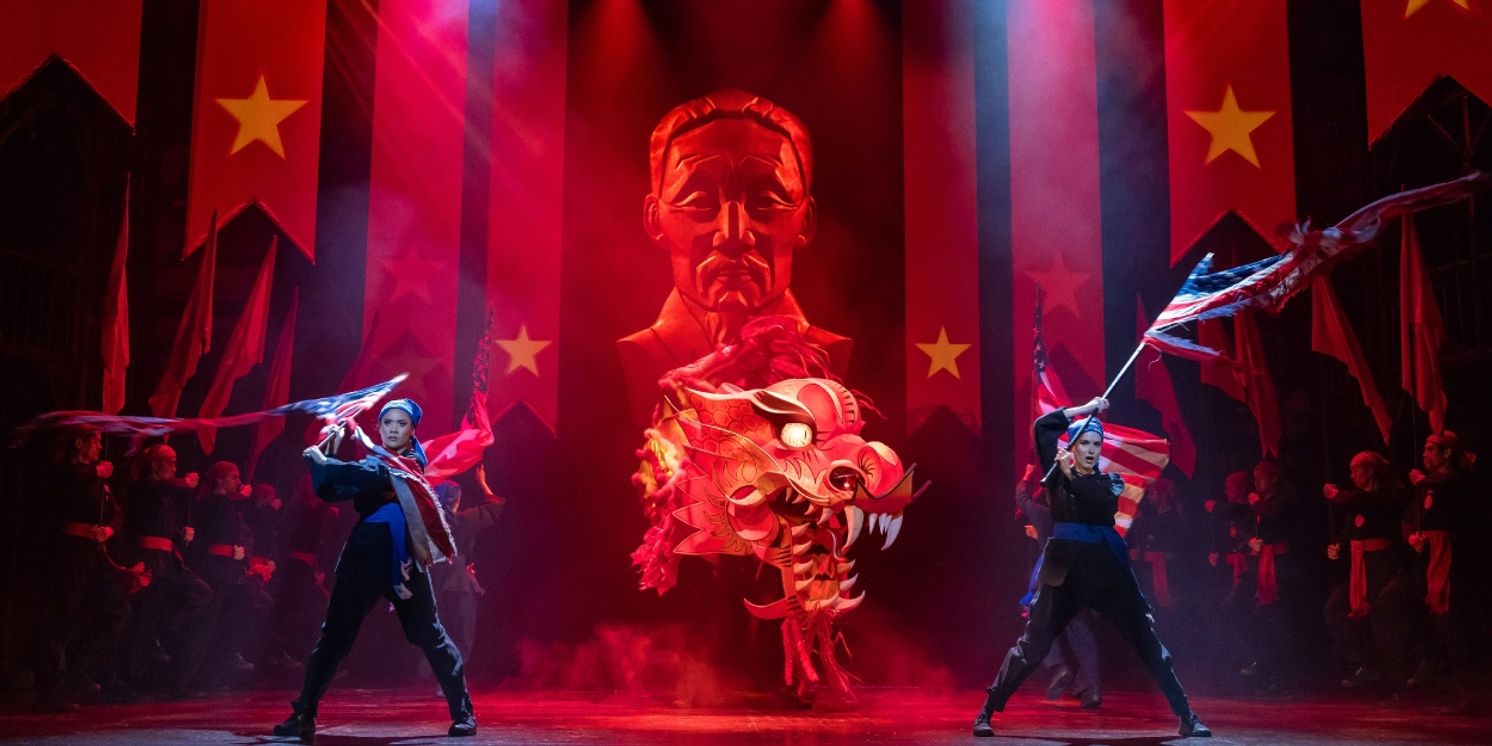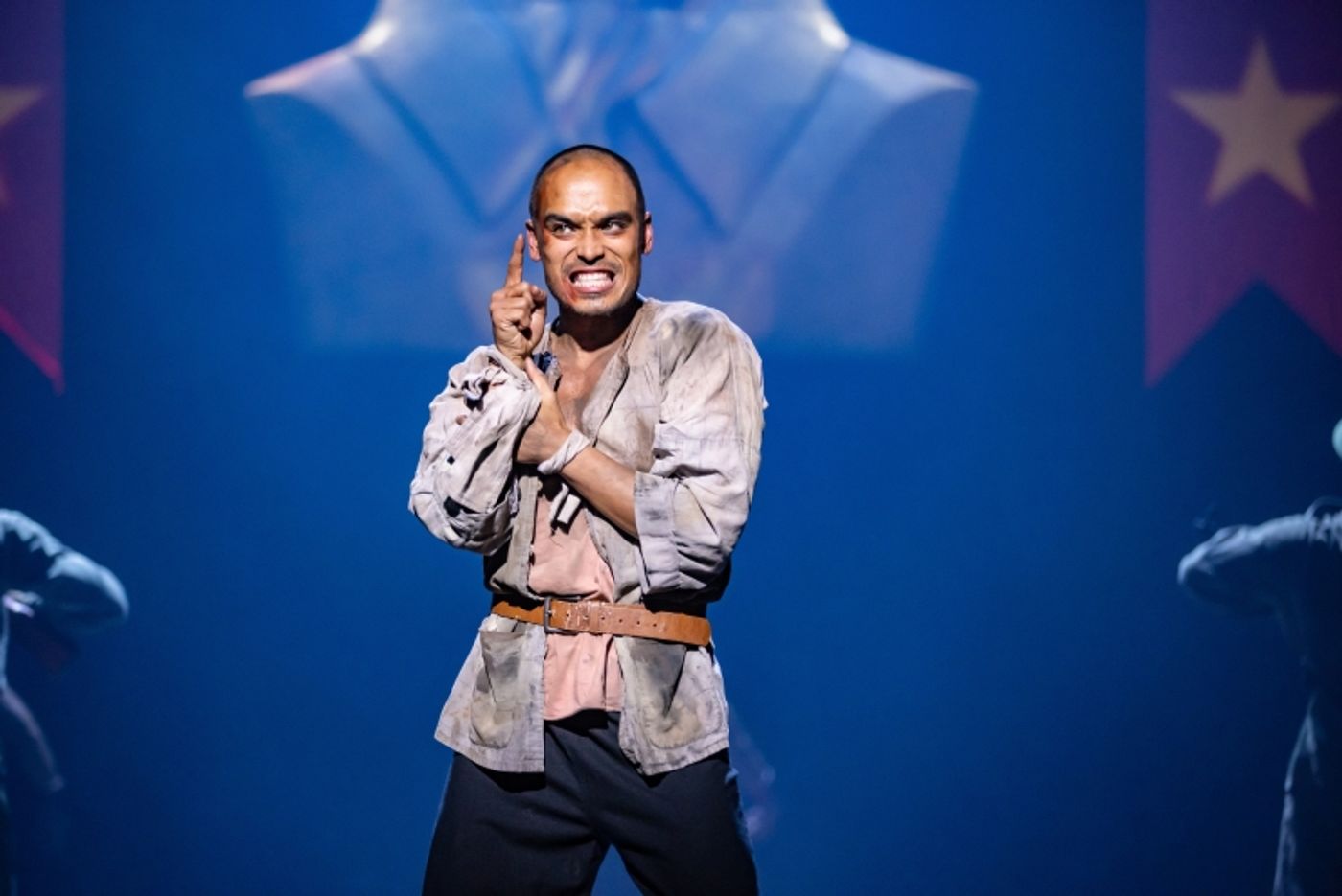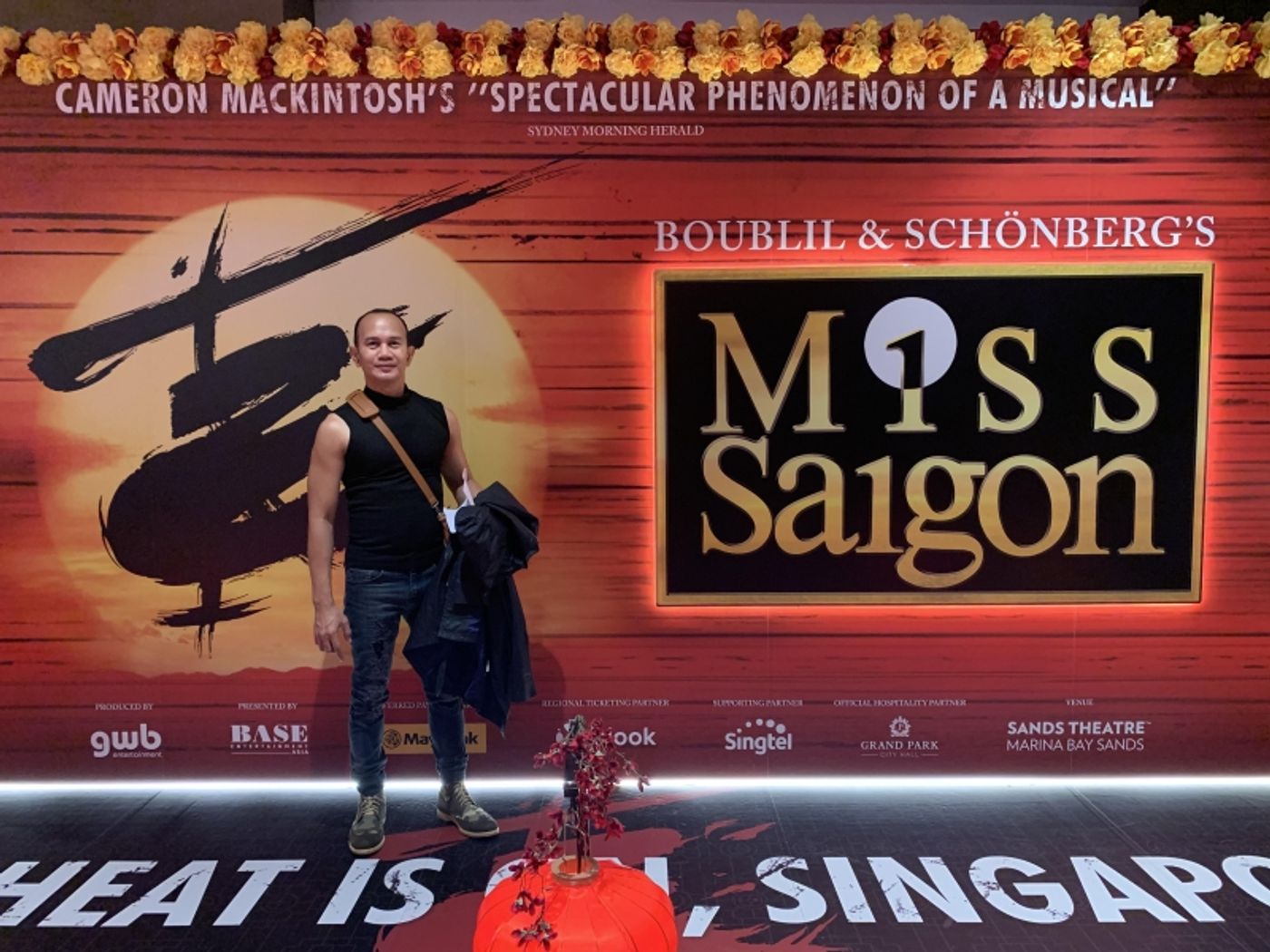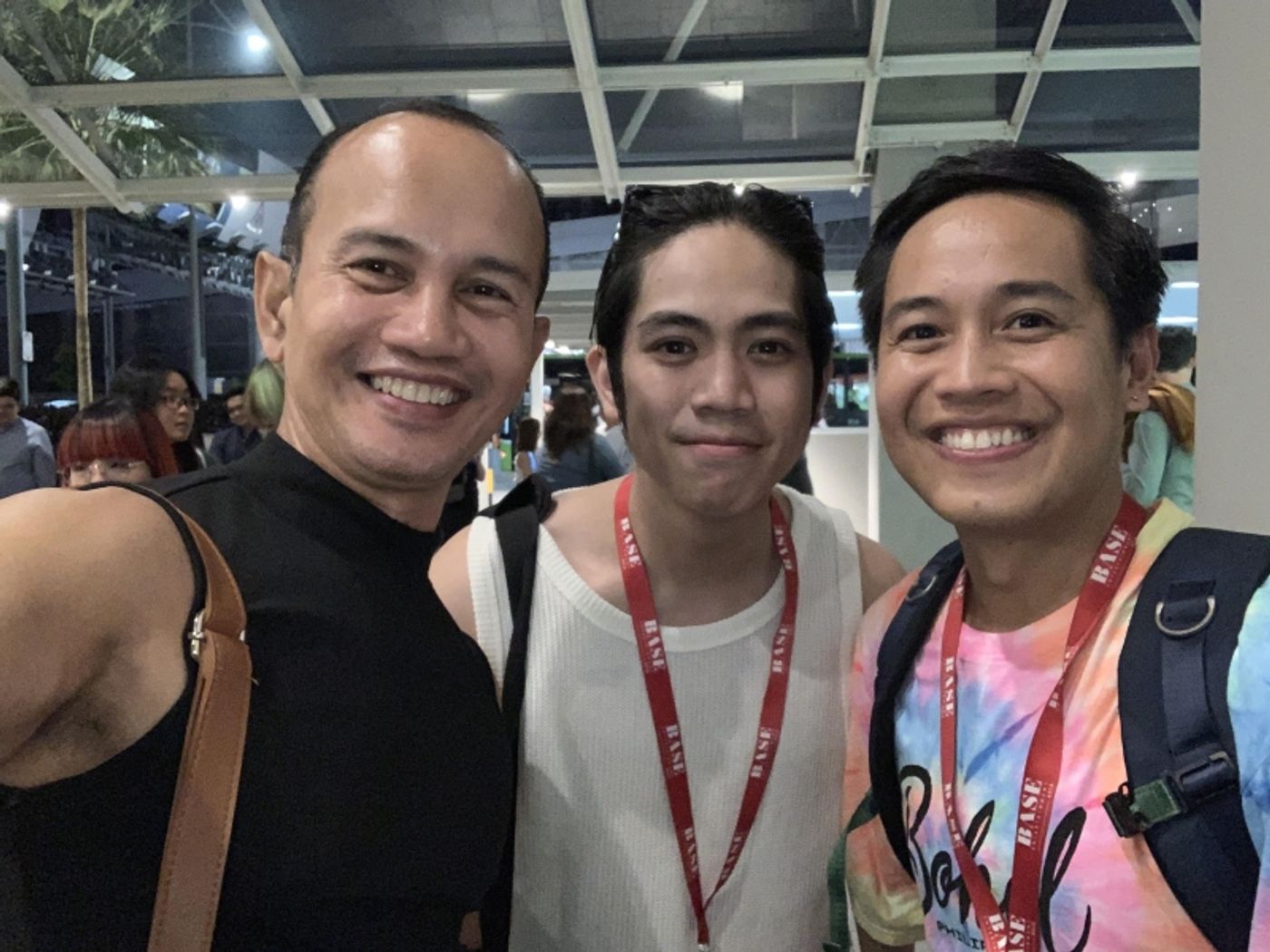MISS SAIGON And Me: A Three-Decade Chase
Warning: this is not a review—consider this a personal narrative of how one musical has profoundly impacted my life.

Warning: this is not a review—consider this a personal narrative of how one musical has profoundly impacted my life, from my teenage years to college, as a theatre actor and performer on the side, through my time as a Broadway World critic, and as a professional teacher.
Musical theatre became a transformative part of my life when I first encountered Miss Saigon as a young adult in 1989. Lea Salonga's mesmerizing performance opened my eyes to a genre that combined compelling storytelling, powerful music, and breathtaking visuals. Her success on the international stage sparked a deep sense of pride among many Filipinos. Since then, I have longed to witness this iconic musical live. Though I missed the 1999 Manila run (I was performing on Bakhita the Musical, and as a fresh, self-supporting college graduate, I was too broke to afford a ticket) and the recent Australian tour that played at Solaire in Manila, I finally fulfilled that dream in Singapore—an experience that felt surreal and profoundly fulfilling.
Long before Miss Saigon, I was already a fan of Lea through her single Mula Noon, Hanggang Ngayon. Her pure, crystal-clear voice hinted at the stage megastar she would become. Shortly after, Cameron Mackintosh cast her in the lead role, solidifying her as a symbol of Filipino pride. Alongside Filipino talents like Monique Wilson, Isay Alvarez, and Robert Sena, they proved Filipinos could shine on the global stage, breaking barriers for Asians, particularly Filipinos, in international theatre.
Miss Saigon, a sung-through musical by Claude-Michel Schönberg and Alain Boublil, reimagines Puccini’s Madama Butterfly, setting the doomed romance between a South Vietnamese bargirl and an American Marine during the Vietnam War. Premiering in London in 1989, it became a global phenomenon known for its portrayal of sacrifice, symbolized by a Vietnamese mother’s heartbreaking decision to give her child to an American GI for a better life. The musical’s themes of war, displacement, and sacrifice resonated deeply with Southeast Asia, making it one of the longest-running Broadway shows. As for me, it was the first and only musical I knew around that time, leaving a lasting impact on me.
Listening to the original London cast recording night after night, Miss Saigon became a vivid story in my mind long before I saw it live this year in Singapore. The haunting melody of Last Night of the World was my nightly lullaby, and the evocative lyrics and music brought the scenes to life in my imagination. The pulsing, ominous beats of The Morning of the Dragon vividly painted the horrors of war-torn Vietnam in my head. The beautiful The Wedding Song spoke to my soul even though I didn’t usually sing that kind of music. Meanwhile, the bold lyrics and grand ambitions of the showstopper The American Dream sparked my desire to one day play the role of The Engineer—a dream that felt wildly ambitious, if not laughably far-fetched at the time.
 Seann Miley Moore plays The Engineer.
Seann Miley Moore plays The Engineer.
In college, I was drawn to the grand ambitions of The Engineer. I was luckily cast in the role for the CEU Dramatic Guild’s 1995 recital of Miss Saigon, amusingly titled The Fall of Saigon, to fend off copyright issues (hehehe). The performance was well-received, with university audiences raving about my portrayal and even encouraging me to audition for the part professionally. That summer, I attended an acting workshop with Monique Wilson, Lea’s alternate in the role. When I shared the “title” of our production with her, she responded with a hearty laugh. With Monique as my teacher, the Miss I was enamored with felt so close and palpable. My dream of seeing it live in London became even stronger.
The closest I ever came to being part of Miss Saigon was in 2016, when the producers held auditions in Manila from March 15 to 21 for an upcoming international production. The auditions saw close to a thousand aspirants, and one of them was me. Driven by ambition and the encouragement of friends, I went with a rock-strong resolve. I sang the standard number of bars of Why God, Why? and was thrilled to receive a callback on the spot. In the next round, they had us learn a jazz dance routine along with the other hopefuls. Though dancing was not my strong suit, I made it through and was asked to stay. The long wait between rounds was as nerve-wracking as the auditions themselves. When it came time for my third round, where I had to sing Bui-Doi, exhaustion from all the singing and dancing had set in. Hungry and tired, my voice faltered at the worst possible moment. That failure crushed me, but I moved on—and so did the dream.
This year, after being contracted to teach English at Bina Bangsa School in Pantai Indah Kapuk, Jakarta, I once again missed the Manila leg of the Miss Saigon tour. Preparing for a new job and life abroad left no time for the musical I had longed to see. But moving to Indonesia flung another door wide open—the Singapore leg of the tour. Though Miss Saigon in Singapore was neither convenient nor affordable, I eagerly set my sights on the school’s academic break, finally ready to experience Miss Saigon live. I can’t wait to share the experience with my students. As I have always shared with my literature and art appreciation students – the first and last demand of appreciation is experience.
I booked my ticket for the Singapore show on September 28, just a day before the musical closed at Marina Bay Sands Theatre. According to Broadway World Sydney, while incorporating elements from the 1989 original, this revival shifted focus to deliver a deeper message beyond the love story, offering a critical commentary on American military intervention and cultural arrogance. I was apprehensive about how these changes might affect the musical I had fallen in love with.
 The author at the Sands Theatre lobby
The author at the Sands Theatre lobby
On the gala night of September 28, I walked into the Sands Theatre with excitement, nerves, and anticipation. It was my first time in the venue, and the journey to the theatre felt like navigating a labyrinth. After taking what felt like eons to get from the taxi bay to the theatre lobby and snapping a million selfies, I finally found my seat, and the theatre instantly felt warm and familiar. From a distance, the opening set seemed to whisper a friendly welcome. As the show started with The Heat is On in Saigon, my nerves melted away, and I caught myself quietly humming and toe-tapping to the lyrics and beats I had memorized long ago.
Of the updated version, the revised lyrics in the Australian production did nothing to diminish my love for the score and plot. This Sunburnt Country version earned my critical approval, as the once-prominent "white savior" narrative has been nearly erased. BWW Sydney is right: this version goes beyond the stereotypical portrayal of Asian women as prostitutes and the Vietnamese as an inferior race in need of saving by the superior American GIs. The love story has become almost incidental to a much bigger narrative.
Seann Miley Moore’s portrayal of The Engineer transformed him into a gender-fluid cultural symbol of egotistical ambition born out of cruel circumstances. John’s character has become more compassionate toward Kim, delivering his speech about the bui-dois directly to the audience, adding depth. Ellen is no longer the wife I once wished could be written off with a divorce from Chris (suckers for happy endings, say yeah!).
Most notably, Kim is no longer just the innocent bargirl forced into prostitution; she’s now portrayed as wilder and more potent—a hardened fighter. This shift gives her and the other prostitutes a new contextual reality: in war, there’s no dignity—only the choice between becoming a dead victim or an unfeeling survivor.
 "Kim's Nightmare/The Fall of Saigon" scene
"Kim's Nightmare/The Fall of Saigon" scene
In the back of my head, as the show seamlessly played, the thought of the much-touted helicopter being scrapped for touring convenience terrified me. Thankfully, it appeared and landed, greeted by loud ohs and ahs.
My favorite part of all—the spectacular The Morning of the Dragon—slayed with choreographic precision, flawless execution, and stunning sounds, lights, and visuals – all combined to evoke a tangible sense of dread for the tragedy that was to come. As I have preached, any theatre must have its version of spectacle to make it memorable. Not to discount music, plot, good characterization, and superb cast.
Finally, Kim’s death at the finale is not only a testament to how far Asian mothers will go to ensure a better future for their children but also a reflection of the death of nations ravaged by senseless wars.
After the show, my social media friend Winchester Lopez, the show’s swing and dance supervisor, sent me a video guide on navigating the three-story descent from the theatre to the stage door. There, I met Malcolm Conlan, a British national married to a Filipina, proudly donning a bright blue barong, with more pride than most Pinoy men. Marion Garcia, a mutual friend and show producer in Vienna, had connected me with Winchester via Instagram. He was with wide-eyed Czar Decena, an ensemble member recruited from Repertory Philippines.
 The author with Czar Decena and Winchester Lopez
The author with Czar Decena and Winchester Lopez
.jpg?format=auto&width=1400) The author with Malcolm Conlan
The author with Malcolm Conlan
Finally, I met Seann Miley Moore, who happily coaxed me to hug him but declined a post-show photo, saying he looked awful after all the singing and dancing and instead hinted at using the official show photos. I concurred.
I also met the adorable Francesco Jalbuena Napal, who played Tam, and when I invited him to be carried “Engineer-style,” he nonchalantly obliged.
One of my regrets was leaving too soon, as I would have liked to share a moment with Abigail Adriano, who played Kim, and the rest of the cast. Although Lea Salonga will forever be associated with the role, Abigail’s portrayal is entirely her own. She has ripped herself away from a templated performance, offering a voice that is full, soft, tender, rough, and monstrous when needed.
.jpg?format=auto&width=1400) From a distance, I saw the growing line of commuters at the taxi bay, and after spending the day exploring the amazing attractions of Gardens by the Bay, I was more than ready—albeit reluctantly—to call it a night. It was as if the adage “Art imitates life” had come to fruition when I hailed an immaculate white Mercedes-Benz taxi, and the lyrics of The American Dream began playing on repeat in my mind: “Cars that have bars take you there – The American Dream! On stage each night, Fred Astaire – the American Dream!”
From a distance, I saw the growing line of commuters at the taxi bay, and after spending the day exploring the amazing attractions of Gardens by the Bay, I was more than ready—albeit reluctantly—to call it a night. It was as if the adage “Art imitates life” had come to fruition when I hailed an immaculate white Mercedes-Benz taxi, and the lyrics of The American Dream began playing on repeat in my mind: “Cars that have bars take you there – The American Dream! On stage each night, Fred Astaire – the American Dream!”
To cap off my journey, the next day I headed to Sentosa Island, home to the famous Madame Tussauds Wax Museum. With my lifelong dream of seeing Lea Salonga as Kim in Miss Saigon forever out of reach, there was only one thing left to do to ease that longing. Inside, among rooms full of celebrity doppelgängers, stands Lea’s own, dressed in a sparkling blue Rajo Laurel gown and holding a mic. Seizing the moment, I tossed aside all forms of shame and decency, grabbed the mic handed to me by the museum’s friendly tour guide, Eana, and did the impossible: sing a duet with Lea. Yes, we performed The Last Night of the World, much to the surprise of other tourists. The guests approved alright, but she didn’t budge. Well, there's still time left for that duet. Perhaps an Aladdin and Princess Jasmine number wouldn’t be too ambitious.
Photos: Daniel Boud, Vince Layson Vicentuan

Videos

